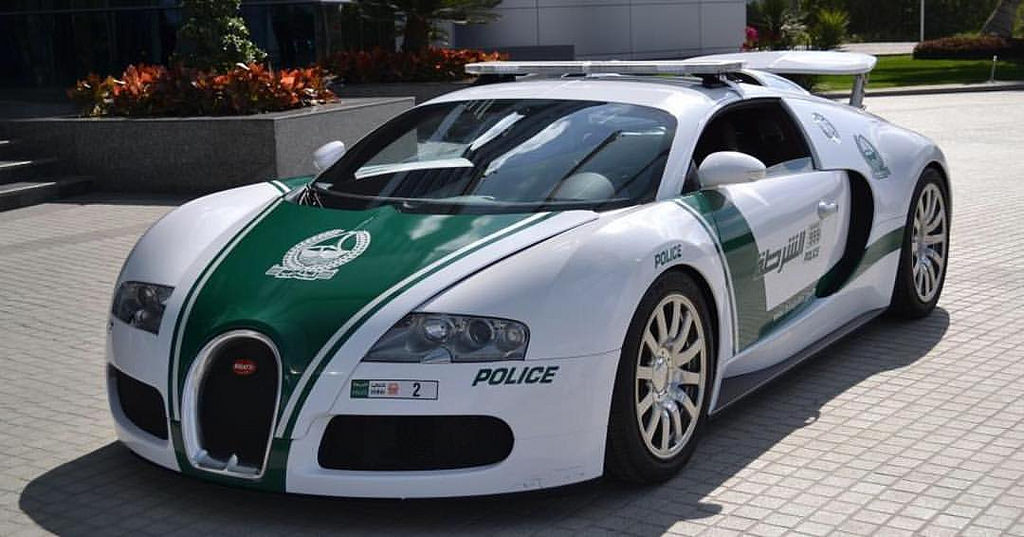While Italy is already known for its production of ultra high-end sports car manufacturers like Ferrari and Maserati, the country's police department is currently making a splash for its newest service vehicle. On March 30, 2017, the keys to a Lamborghini Huracan were handed to Interior Minister Marco Minniti, during a ceremony in Rome, Italy.
According to CNN, "In addition to the as-standard all-wheel drive and aluminum-carbon fiber hybrid chassis, the Huracan comes equipped with crime-fighting gadgets, including an on-board police tablet computer. It's also decked out in police decals and comes in the official color of the Italian police - police medium blue. The car also features the standard cop-issue gun holster, portable extinguisher, VHF police radio and even hooks to hold the "paletta," the traditional hand-held red-and-white "stop" sign, in place."
The question on everyone's mind is why does a police department need a supercar with a top speed of 201 mph that can go 0 to 60 mph in 3.2 seconds?
Well, "The supercar will be used for special assignments such as the urgent transport of blood and organs, but when its not required for ultra-quick deliveries, it will patrol the highways surrounding the Italian city of Bologna, according to the manufacturer. Its specialty, unsurprisingly, will be chasing down speeders." Fortune reports, "There's also a defibrillator in the car, which can save lives by inducing targeted electric shocks that restore normal heartbeat in case of serious arrhythmia or ventricular fibrillation."
CNN also informed readers that "It isn't the first supercar pressed into the service of the law. Another Huracan has been operated by Rome's traffic cops since 2015, and a Gallardo LP560-4, with its top speed of 230 mph (370 km/h), will be retired as the new vehicle comes into service."
The Dubai Police Department's Luxury Platoon
Using supercars as police vehicles is not exclusive to Italy. In Dubai, tourists stopping the police to take a selfie with their service vehicle is a common occurrence. Who can blame tourists from being amazed when among the Dubai Police Department's collection are a bespoke Aston Martin One-77 (only 77 of these were ever built), a Bentley Continental GT, three hybrid Porsche Panameras, two BMW i8s, and a Bugatti Veyron. The Veyron is the department's most impressive vehicle, boasting a top speed of 253 mph and the capability to go from 0 to 60 mph in 2.5 seconds, which The Guinness Book of World Records certified as the world's fastest police vehicle in service.
These luxury police cars are however are only typically driven around the Dubai Mall and Jumeirah Beach and other tourist hot spots, in order to drum up attention. In fact, Major Sultan Al Marri of the General Department of Transport & Rescue told CNN, "We're not looking to just show off with the car, we're looking to show tourists how friendly the police is here in Dubai. We are looking for ways to connect with people all the time."
The Michigan State Police's Sports Cars
Though they may not be on the same six-to-seven-figure price level of the Huracan and the Veyron, the Michigan State Police (MSP) is no stranger to sports cars. In addition to Chevrolet and Ford SUVs and the nationwide police standard vehicle, the Ford Crown Victoria Police Interceptor, the MSP also uses Dodge Chargers. And though they're known for the "Blue Goose," for their 100th Anniversary earlier this year, the Michigan State Police added 50 new 2016 Dodge Chargers, painted black and gold in homage to the 1937 Ford Model 74-one of their first patrol cars.
Source: GIPHY, Top Gun
Sports cars, whether the go 0 to 60 mph in 6.3 seconds like the Charger or in 2.5 seconds like the Veyron, are all designed with the same purpose in mind: speed. However, speed is also one of the main causes of car accidents. In research conducted by The National Highway Traffic Safety Administration (NHTSA), it was found that, "There were 32,675 traffic fatalities in 2014, among them 9,262 (28%) that occurred in speeding-related crashes." So, even if you "feel the need for speed, " like Top Gun's Maverick, it's safer for drivers of sports cars to stick to the speed limit. Otherwise, speeding drivers might find themselves being speedily rushed to the hospital in an ambulance.
Car accidents caused by speeding are very preventable. By following the speed limit, drivers are less likely to be involved in motor vehicle collisions, and in the case they are still involved in car crashes, are likely to avoid more serious injuries than they would have sustained if they were speeding. Speeding to save five minutes off of your travel time is not worth being involved in a collision that could cause serious injury or even death. If you or someone you know has been the victim of a car crash caused by speeding, call The Michigan Law Firm, PLLC. We help victims of speeding collisions identify and receive compensation from any benefits they may be entitled to under Michigan law. Call us at 844.4MI.FIRM, for a free consultaion.


































